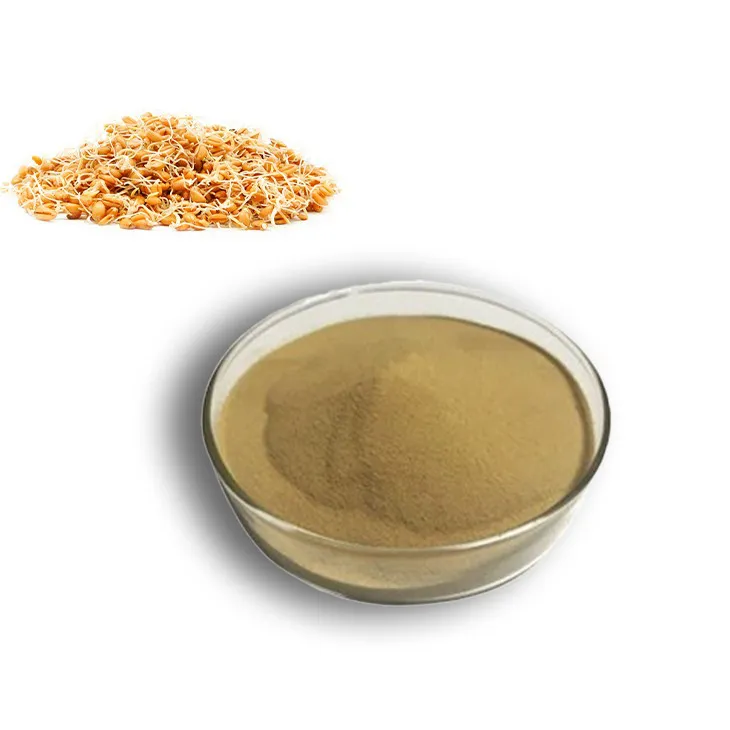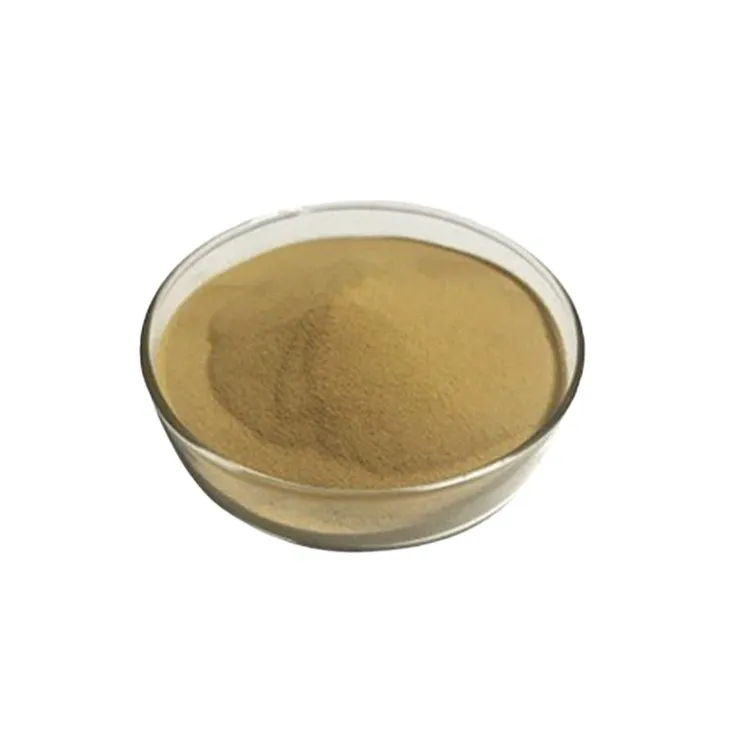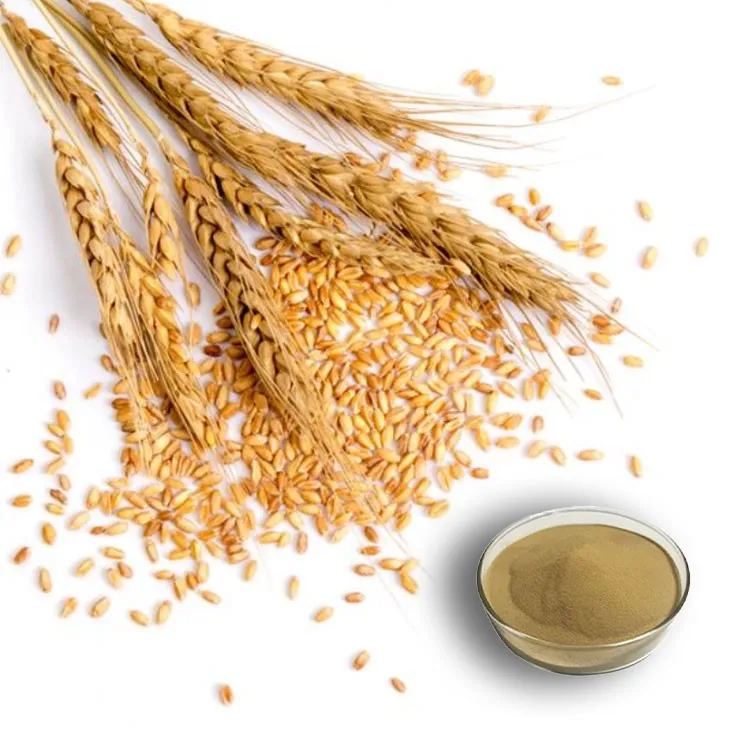- 0086-571-85302990
- sales@greenskybio.com
Wheat Germ Extract: Benefits, Uses and Possible Side Effects
2024-11-13

1. Introduction
In recent years, Wheat Germ Extract has been emerging as a topic of great interest in the field of health and nutrition. Derived from the germ of the wheat kernel, which is the embryo of the wheat plant, this extract is rich in a variety of nutrients. It has the potential to offer numerous health benefits, but it also comes with some considerations regarding its uses and possible side effects.

2. Nutritional Composition of Wheat Germ Extract
Wheat Germ Extract is a nutritional powerhouse. It contains a significant amount of essential fatty acids, such as omega - 3 and omega - 6 fatty acids. These fatty acids are crucial for maintaining healthy cell membranes, reducing inflammation, and supporting overall cardiovascular health.
Additionally, it is a great source of proteins. The proteins in wheat germ extract are rich in essential amino acids, which are the building blocks of our body. They play important roles in muscle building, tissue repair, and enzyme production.
Vitamins are also abundant in wheat germ extract. It contains high levels of vitamin E, a powerful antioxidant. Vitamin E helps protect cells from damage caused by free radicals, which are unstable molecules that can lead to oxidative stress and various diseases.
Minerals like zinc, magnesium, and selenium are present in wheat germ extract as well. Zinc is essential for a healthy immune system, magnesium is involved in many biochemical reactions in the body, and selenium has antioxidant properties and is important for thyroid function.

3. Health Benefits of Wheat Germ Extract
3.1 Heart Health
The essential fatty acids in wheat germ extract can have a positive impact on heart health. Omega - 3 fatty acids, in particular, are known to reduce triglyceride levels in the blood, lower blood pressure, and decrease the risk of heart disease. By improving the lipid profile and reducing inflammation in the blood vessels, wheat germ extract may contribute to a healthier cardiovascular system.
3.2 Skin Health
Vitamin E and the fatty acids in wheat germ extract are beneficial for skin health. Vitamin E helps maintain the integrity of the skin by protecting it from oxidative damage. The fatty acids keep the skin moisturized and supple. They can also help in reducing skin inflammation, which is beneficial for conditions like eczema and psoriasis.
3.3 Immune System Support
The presence of zinc and other nutrients in wheat germ extract makes it a potential booster for the immune system. Zinc is involved in the function of immune cells, and a deficiency can lead to a weakened immune response. By providing an adequate supply of zinc and other immune - supporting nutrients, wheat germ extract may help the body fend off infections more effectively.
3.4 Anti - aging Effects
Due to its antioxidant content, especially vitamin E, wheat germ extract can play a role in anti - aging. Free radicals are constantly attacking our cells, leading to premature aging. The antioxidants in the extract can neutralize these free radicals, reducing the signs of aging such as wrinkles, fine lines, and age spots.

4. Uses of Wheat Germ Extract
4.1 Dietary Supplement
One of the most common uses of wheat germ extract is as a dietary supplement. It is available in various forms, such as capsules, tablets, and powders. People who may have a deficiency in certain nutrients found in the extract, or those who are looking to enhance their overall health, may choose to take it as a supplement.
4.2 Cosmetics
In the cosmetic industry, wheat germ extract is used in a variety of products. It can be found in creams, lotions, and serums for skin care. Its moisturizing and antioxidant properties make it a valuable ingredient for products aimed at improving skin texture, reducing wrinkles, and protecting the skin from environmental damage.
4.3 Food Additive
Wheat germ extract can also be used as a food additive. It can be added to baked goods, cereals, and other foods to increase their nutritional value. However, it should be noted that some people may have allergies or sensitivities to wheat, so its use in food products needs to be carefully considered.

5. Possible Side Effects of Wheat Germ Extract
5.1 Allergic Reactions
Since wheat germ extract is derived from wheat, individuals with wheat allergies are at risk of having an allergic reaction. Symptoms of an allergic reaction can include hives, itching, swelling, difficulty breathing, and in severe cases, anaphylaxis. People with known wheat allergies should avoid wheat germ extract products.
5.2 Digestive Issues
Some people may experience digestive problems after consuming wheat germ extract. This can include symptoms such as bloating, gas, abdominal pain, and diarrhea. These issues may be more likely to occur in individuals with sensitive digestive systems or those who consume large amounts of the extract.
5.3 Interactions with Medications
Wheat germ extract may interact with certain medications. For example, it could potentially interfere with the absorption or effectiveness of blood - thinning medications. If you are taking any medications, it is important to consult your doctor before starting to use wheat germ extract to avoid any potential negative interactions.
6. Precautions and Considerations
Before using wheat germ extract, it is crucial to consider your individual health status. If you have a history of wheat allergies, digestive problems, or are taking medications, it is advisable to consult a healthcare professional.
Additionally, when choosing a wheat germ extract product, it is important to select a high - quality product from a reputable source. This ensures that the product contains the claimed nutrients and is free from contaminants.
7. Conclusion
Wheat germ extract offers a range of potential health benefits, from promoting heart health to enhancing skin quality. Its uses in dietary supplements, cosmetics, and food additives are also quite diverse. However, it is not without possible side effects, and proper precautions need to be taken. By being aware of both the benefits and the risks associated with wheat germ extract, individuals can make more informed decisions about whether or not to incorporate it into their health and beauty regimens.
FAQ:
What are the main benefits of wheat germ extract?
Wheat germ extract contains essential fatty acids and proteins. It can promote heart health by potentially reducing bad cholesterol levels. It may also enhance skin quality, making it look more radiant and healthy. Additionally, it can be a good source of nutrients for overall well - being.
How can wheat germ extract be used?
It can be used in various ways. Some people add it to their smoothies for an extra nutritional boost. It can also be incorporated into baked goods like bread or muffins. In the form of supplements, it can be taken as directed for health - related purposes.
Are there any potential side effects of wheat germ extract?
Yes, there are possible side effects. Some individuals may be allergic to wheat germ extract, which can cause allergic reactions such as skin rashes, itching, or swelling. In some cases, it may also cause digestive issues like stomach discomfort, nausea, or diarrhea.
Is wheat germ extract suitable for everyone?
No, it is not suitable for everyone. People with wheat allergies should avoid it. Also, those with certain medical conditions or taking specific medications should consult a doctor before using wheat germ extract to ensure it won't interact negatively with their health or treatment.
How much wheat germ extract should one take?
The appropriate amount varies depending on factors such as age, health condition, and the purpose of use. Generally, when taking it as a supplement, it is best to follow the recommended dosage on the product label. However, it is always advisable to consult a healthcare professional for personalized advice.
Related literature
- The Nutritional Value of Wheat Germ Extract"
- "Wheat Germ Extract and Heart Health: A Review"
- "Beneficial Effects of Wheat Germ Extract on Skin"
- ▶ Hesperidin
- ▶ citrus bioflavonoids
- ▶ plant extract
- ▶ lycopene
- ▶ Diosmin
- ▶ Grape seed extract
- ▶ Sea buckthorn Juice Powder
- ▶ Beetroot powder
- ▶ Hops Extract
- ▶ Artichoke Extract
- ▶ Reishi mushroom extract
- ▶ Astaxanthin
- ▶ Green Tea Extract
- ▶ Curcumin Extract
- ▶ Horse Chestnut Extract
- ▶ Other Problems
- ▶ Boswellia Serrata Extract
- ▶ Resveratrol Extract
- ▶ Marigold Extract
- ▶ Grape Leaf Extract
- ▶ blog3
-
Cranberry Plants and Skin - care Products.
2024-11-13
-
Fig Extract
2024-11-13
-
Aguaje Extract
2024-11-13
-
Chia Seed Powder
2024-11-13
-
Propolis Extract Powder
2024-11-13
-
Oyster Mushroom Extract Powder
2024-11-13
-
Lemon Juice Powder
2024-11-13
-
Sophora Japonica Flower Extract
2024-11-13
-
Medicinal Marshmallow Extract
2024-11-13
-
Nettle leaf extract
2024-11-13
-
Hawthorn Extract
2024-11-13





















